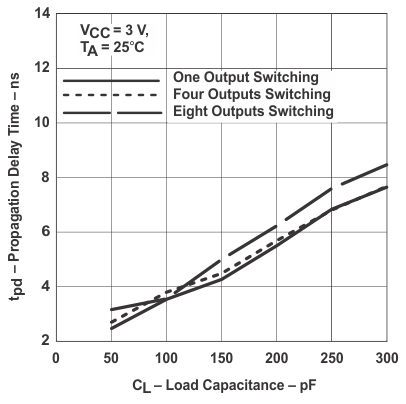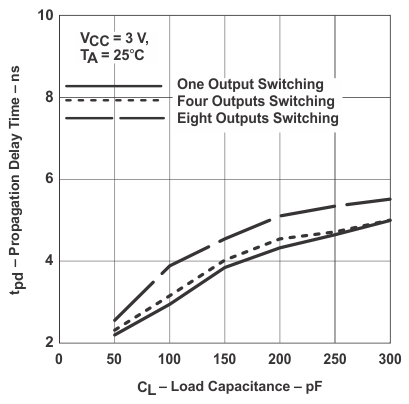JAJSUL0Q January 1993 – December 2024 SN54LVC257A , SN74LVC257A
PRODUCTION DATA
5.9 Typical Characteristics
 Figure 5-1 Propagation Delay (Low to High Transition)
Figure 5-1 Propagation Delay (Low to High Transition)vs Load Capacitance
 Figure 5-2 Propagation Delay (High to Low Transition)
Figure 5-2 Propagation Delay (High to Low Transition)vs Load Capacitance